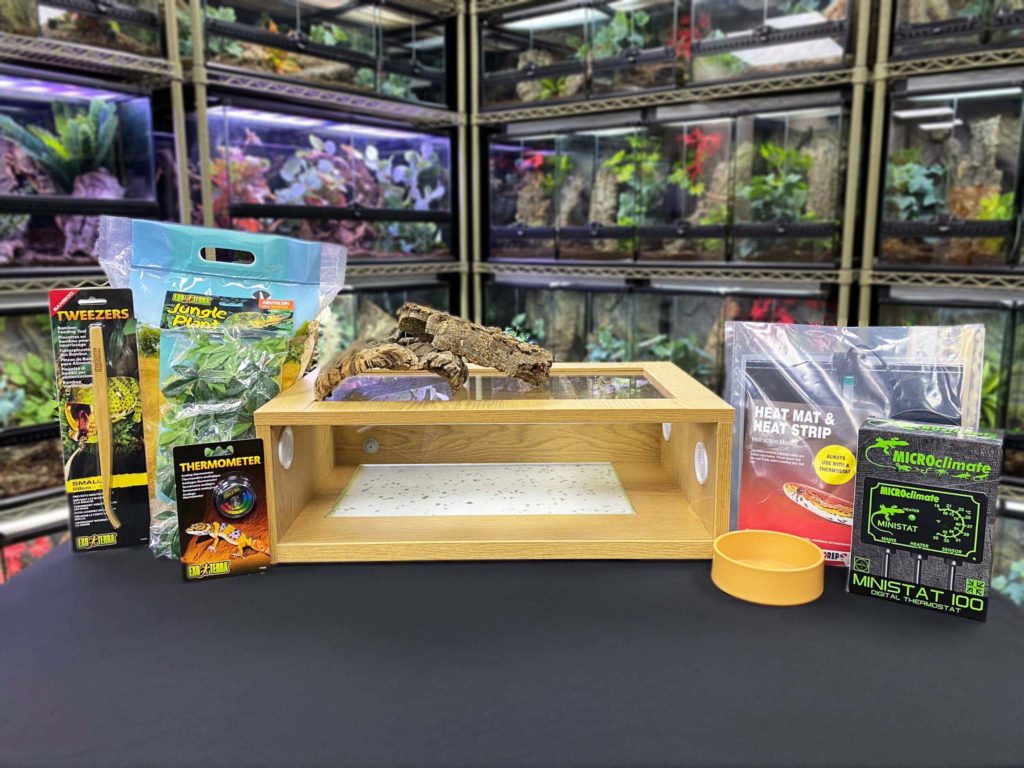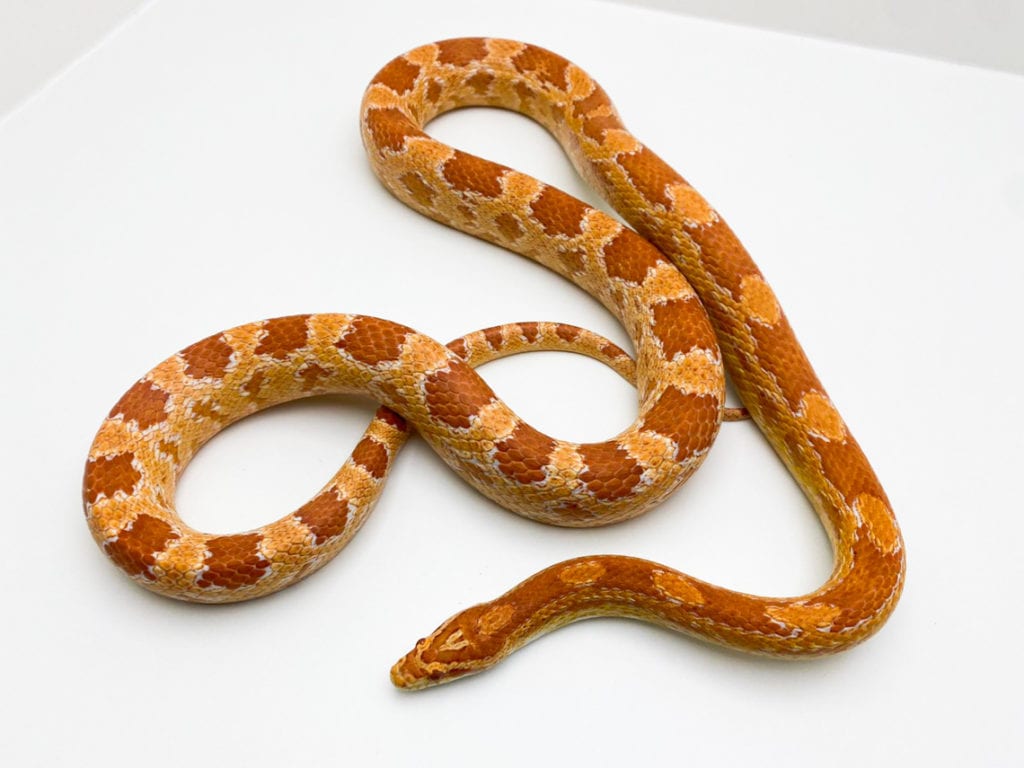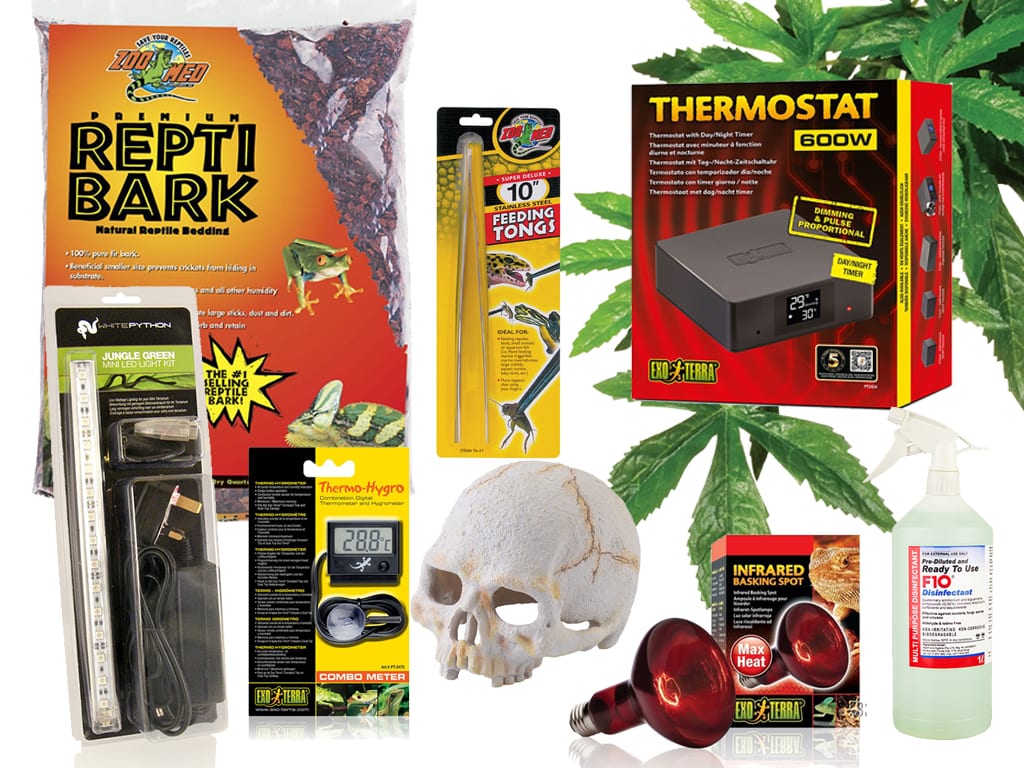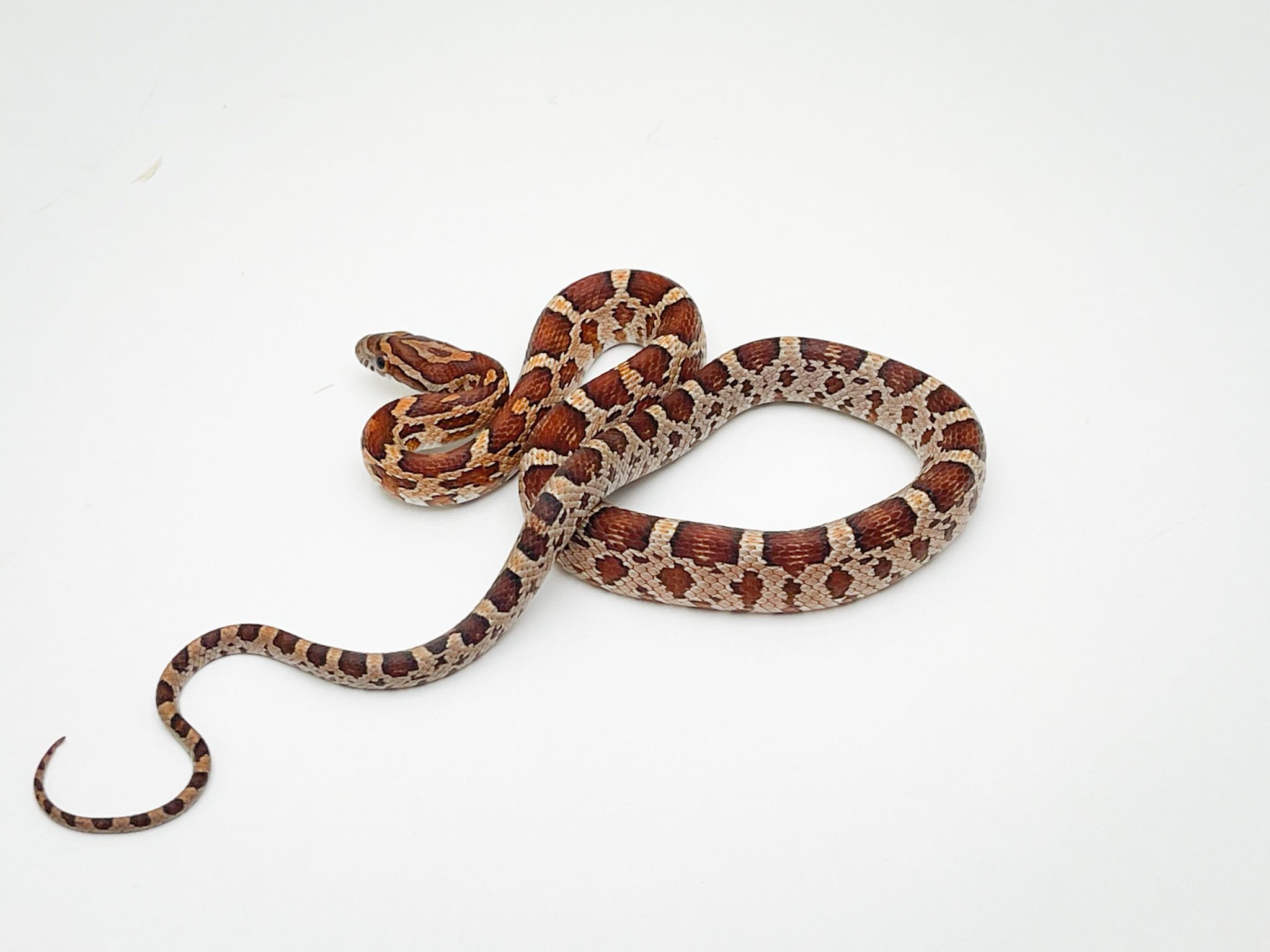
Corn Snake
Care Sheet
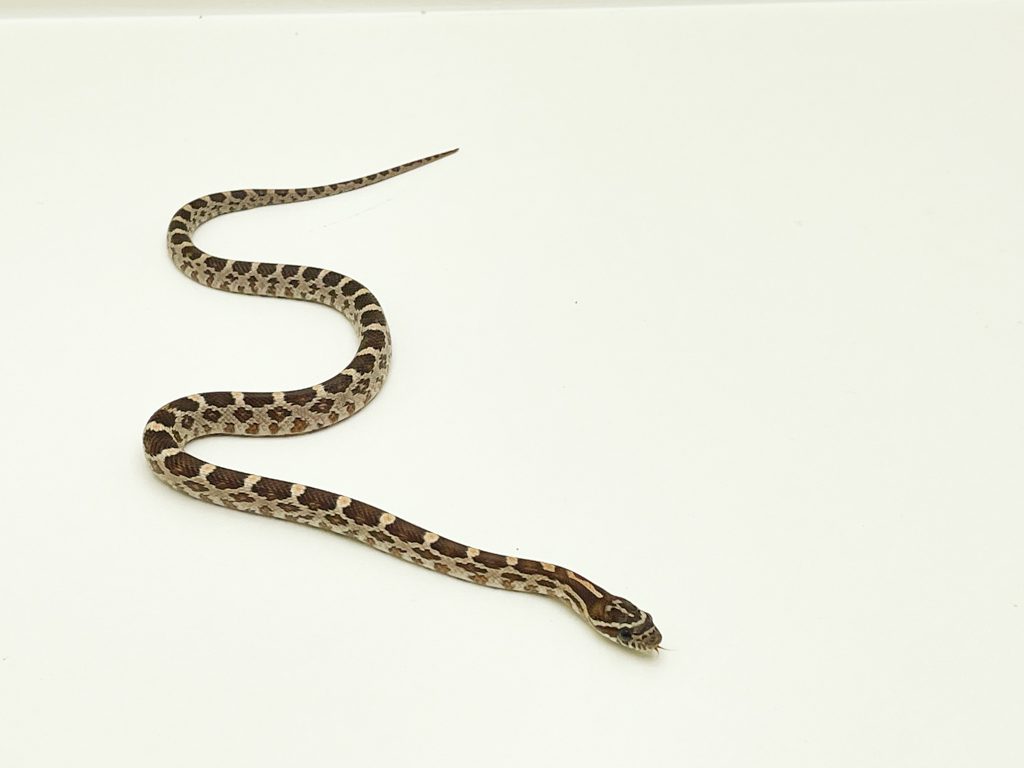
Corn snakes are inquisitive and mischievous snakes who are extremely active and grow to around 3-5 feet. They are however relatively thin and so appear much smaller than when they are fully stretched out
Corn snakes feed on pinkie mice when they are newly hatched and eventually move up size at a time to Large or Jumbo mice. Corn snakes should not be fed rats as they are not able to process such high fat items resulting in retained fatty lumps which cause ill health
Corn snakes are closely related to rat snakes and are able to breed cross species to create hybrids– this is where the Scaleless and Palmetto genes originate
Corn snakes are very fertile breeders and usually lay between 10-30 eggs per clutch- they have the ability to do this 3 times, or so, every season


HANDLING YOUR CORN SNAKE
When handling your corn snake it is important to use an antibacterial hand wash before and after touching your animal. This ensure that no parasites or bacteria is passed between you and your snake. When handling, always use a hook to gently stroke the snakes head to let it know you are going to touch it.
Gently pick the snake up by scooping around 2/3 of the way down the snakes body. Don’t restrict the snake and try not to hold the first 3rd of the snake where the vital organs are, this can cause discomfort to your snake. Always leave 48 hours or more after feeding your snake before handling to prevent bites and discomfort to your animal which can cause regurgitation.


SEXING YOUR CORN SNAKE
Male and female snakes may differ between sizes and length of tail, but to get an accurate gender there are 2 methods.
1- probe your snake by sliding the probe under the vent towards the tail. If the probe goes in a small amount then the snake is female, if the snake is male the probe will slide further, this is where the hemipenes are located.
2- ‘pop’ the snake by holding the snakes tail in one hand and gently rolling towards the vent with the other exposing the genitals.
Snakes can be badly damaged during sexing and should only be sexed by a professional.
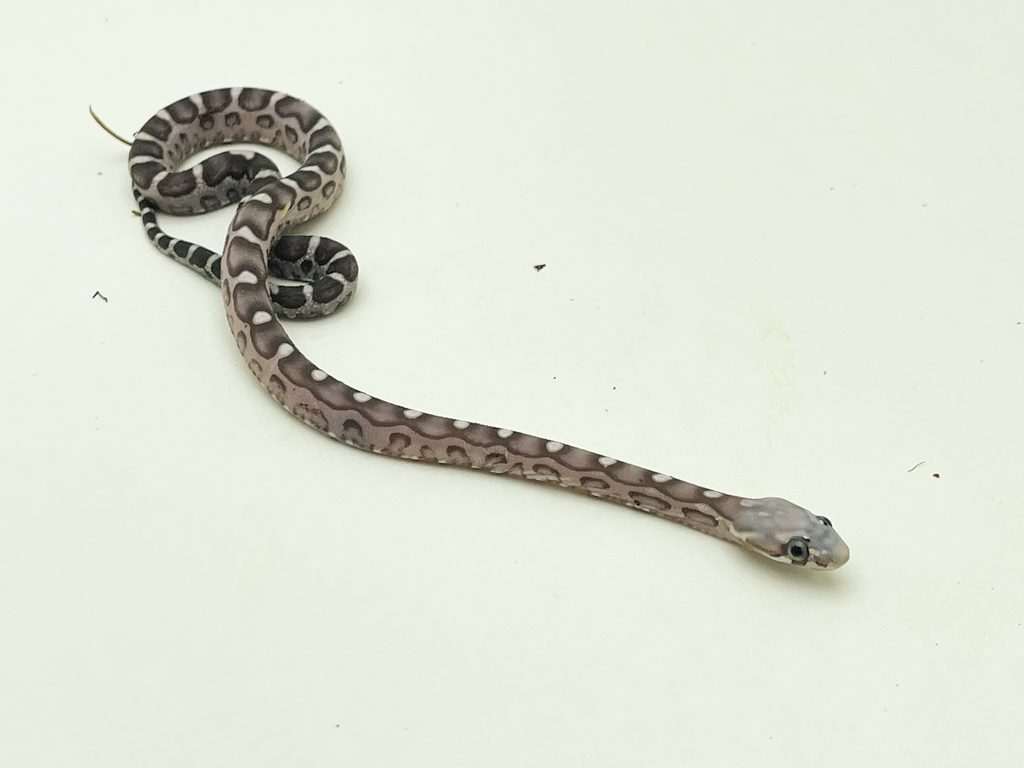

HEALTH CHECK
Health Check It is important to regularly check the health of your corn snake and there are a few common diseases and disorders to look out for.
Eyes– check the eyes are clear of infection, discharge or stuck eye caps (these can occur from a dry shed, increase the humidity or place snake on soak periodically until eye caps come off) You can also put a moss hide in the enclosure as your snake goes into shed. You will be able to see this as the snakes eyes will become cloudy/blue.
Skin– check the skin for black spots or raised scales which can be a sign of mites. Mites can usually be seen around the eye socket and under the chin. Mites can be treated using a number of chemical products or for a natural cure, Taurrus predatory mites can be used regularly for prevention and treatment. Mites are rarer in corn snakes but it is worth keeping an eye out for them. Some keepers choose to treat their animals regularly for mites as a preventative measure.
Respiratory Infections– RI is a term for a broad spectrum of infections in the lungs and respiratory system. It is generally caused by ill health along with damp or cold conditions and can be treated with a nebuliser. We always recommend seeing the vet if you suspect RI, however it is extremely rare and is not usually the actual cause of the symptoms that are seen. RI is not common in corn snakes.








ADVICE FOR LIFE!
When you buy your Pet & Housing from us!
Priority Boarding | Advice available face to face, via Telephone, Facebook Chat, Email, Instagram

